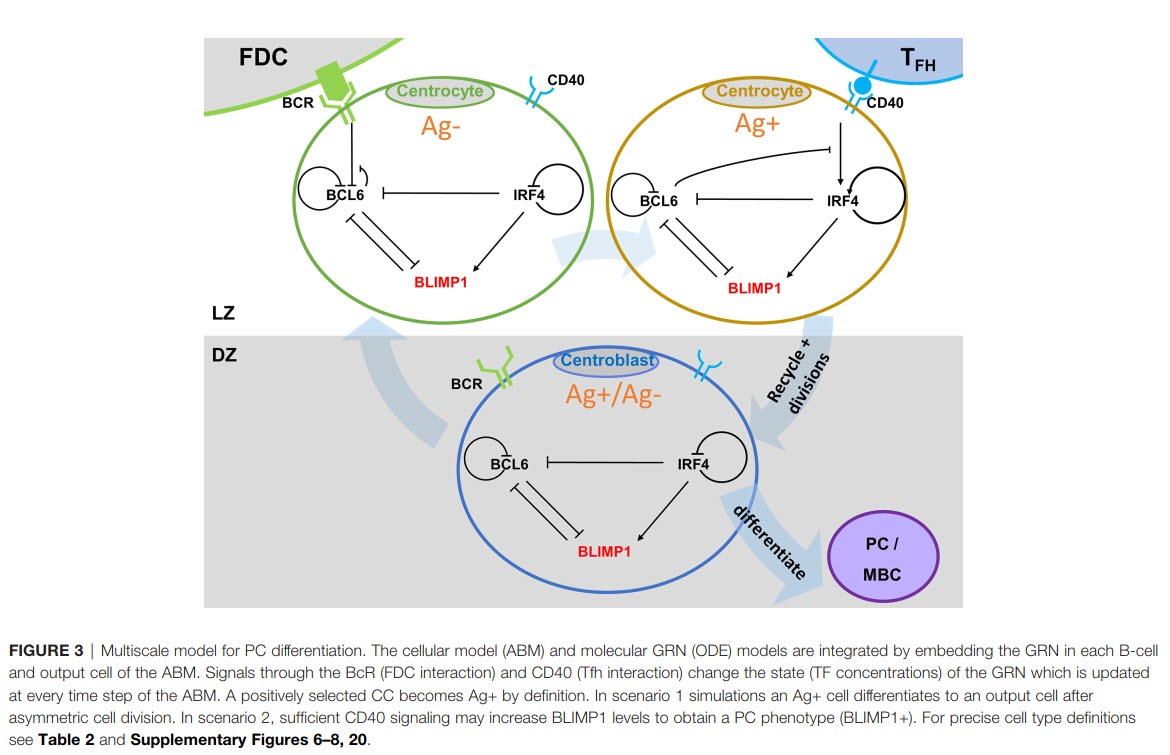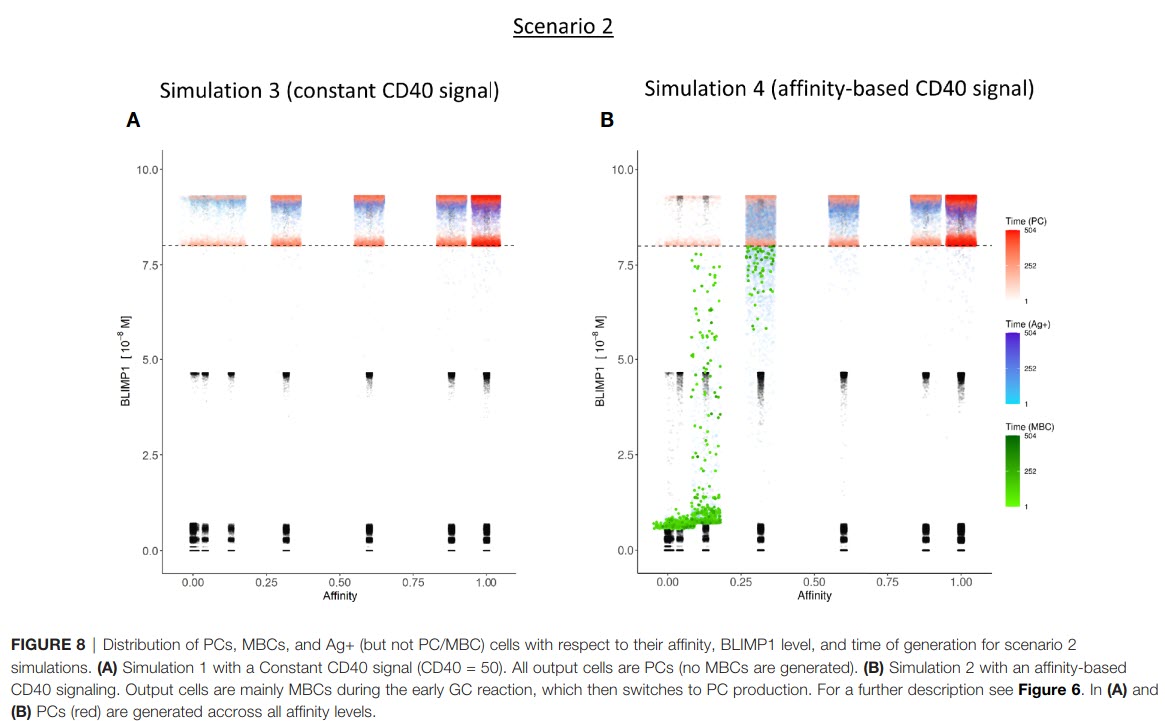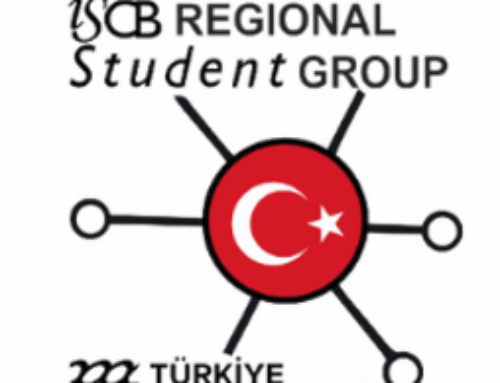Modelling plasma cell differentation
Plasma cell (PC) differentation in the germinal center is still poorly understand. In part this is due to the complexity of the germinal center (GC) and its inaccessibility for experimental investigations. Therefore, Elena Merino Tejero and Danial Lashgari, together with Rodrigo Garcia Valiente (COSMIC) developed a multi-scale computational model to investigate PC differentiation as part of an international collaboration.
Figure copied from Merino Tejero et al (2021) Front Immunol., 11:620716. (click to enlarge)
Figure copied from Merino Tejero et al (2021) Front Immunol., 11:620716. (click to enlarge)
The multiscale model integrates and extends a pre-existing ODE-based model of the core gene regulatory network involved in PC differentation (developed by María Rodríguez Martínez, IBM) with an pre-existing agent-based model of the GC (developed by Michael Meyer-Hermann, HZI). This model enables to test the influence of molecular modulations of the CD40 signaling pathway on the production of GC plasma cells.
From the model its was concluded that affinity-based CD40 signaling in combination with asymmetric division of B-cells result in switch from memory B-cell to plasma cell generation during the course of the germinal center reaction. We also show that cell fate division is unlikely to be (solely) based on asymmetric division of Ag but that BLIMP1 is a more important factor.
Reference
Merino Tejero E, Lashgari D, García-Valiente R, Gao X, Crauste F, Robert PA, Meyer-Hermann M, Martínez MR, van Ham SM, Guikema JEJ, Hoefsloot H, van Kampen AHC. Multiscale Modeling of Germinal Center Recapitulates the Temporal Transition From Memory B Cells to Plasma Cells Differentiation as Regulated by Antigen Affinity-Based Tfh Cell Help. Front Immunol. 2021 Feb 5;11:620716. [Full text]











